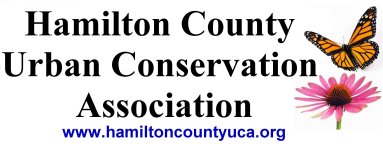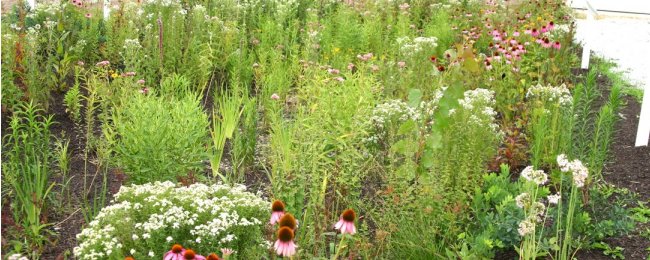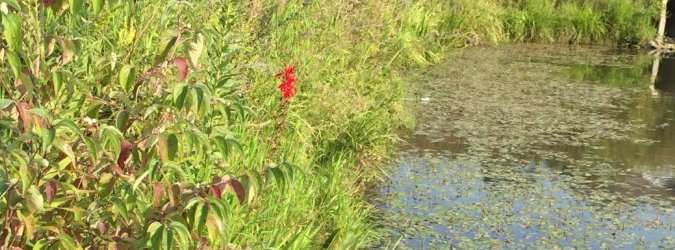
As our County expands, we have experienced significant habitat loss. We continue to replace woodlands, grasslands, and other natural areas with houses, pavement, and mowed lawns. As a result, wildlife species have declined due to the lack of suitable habitat. If we want songbirds, butterflies, bees, and other species of wildlife, we need to integrate native habitat into our yards and neighborhoods. We can make a difference even if we start on a small scale. Imagine how much habitat could be created if everyone dedicated a small portion of their yard to wildlife and environmentally friendly landscapes.
Prairie Habitat

Our yards and nieghborhood common areas primarily consist of mowed turf grass. Mowed turf grass provides virtually no wildlife habitat and offers little envitornmental benefits. We can create grassland habitat by replacing turf grass with native grasses and wildflowers. The native grasses and wildflowers provide critical habitat for songbirds, butterflies, beneficial insects, and other wildlife. You can create a butterfly garden in your yard or convert your neighborhood common area into a majestic meadow.
Rain Gardens

Rain gardens are shallow depressions that are created to collect rainwater. Similar to prairie habitat, rain gardens are planted with specific species of native grasses and wildflowers. These areas provide habitat for beneficial insects such as butterflies and bees. In addition, the deep root systems of the native plants capture runoff from downspouts and parking lots. This allows the water to soak into the ground instead of running off into the stormwater system. Rain gardens are fairly easy to install and can be created in your yard to collect dowspout runoff or in your neighborhood to collect pavement runoff.
Retention Pond Shoreline Enhancements

All neighborhoods contain retention ponds which serve to collect stormwater runoff from the community. Native plants installed along the shoreline and on the banks of your pond provide habitat for a wide range of wildlife including aquatic species. In addition, native plant buffers offer significant environmental benefits, reduce algae growth, and deter nuisance geese.

Connect With Us